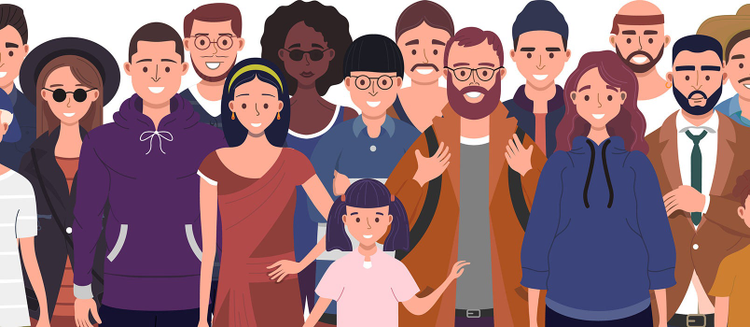How well do you know your customers? Driving innovation with psychographics

The more brands know about potential or existing customers, the better they can fulfill their expectations.
Making sense of customer data and harnessing its power to drive decisions is a top priority for APAC organisations, according to Adobe’s “2020 Digital Trends” report.
Demographic data — age, gender, location, ethnicity, etc. — is one set of information used for targeting potential customers. But not all female Millennials living in Sydney, for example, will want the same products or services. This is where psychographics come in. Psychographics — which help marketers understand a person’s unique attitude, lifestyle, interests, opinions, and values — are rapidly becoming a game-changing differentiator in the APAC marketers’ digital toolbox.
“Psychographics have become significant thanks to their ability to combine demographic and psychological characteristics,” says Gareth Jude, co-founder of retail consultancy ThinkUncommon.
Thanks to technological advances in website analytics and third-party data providers, psychographic information has become much easier to obtain. In fact, many brands may already have the data at hand and not realise it.
“In the past there was a bit of wishing and hoping involved because the segments were based on consumer responses to surveys and media consumption studies,” Jude adds. “The technology has completely changed that. As a result, banks, telcos, and other enterprises will increasingly use psychographics to generate the next-best offers for customers.”
Psychographics in action
Psychographics are being increasingly noticed for the unique ability to match theoretical behaviour with actual behaviour, Jude says. For example, psychographics integrated with geofencing (creating a virtual perimeter for a real-world geographic area) can help marketers develop hyper-localised content.
Jude points to Australian market researcher Roy Morgan’s “Helix Personas” as a classic source of psychographic segmentation in Australia.
Morgan describes the way Helix Personas work as “painting a picture of a nation that is constantly being reshaped by social change.” For businesses, Helix Personas is a data integration tool that can be appended to existing databases, unlocking value by segmenting customers into targetable groups beyond standard demographics. This development, Jude says, “is the most exciting in the technology for some time.”
Bank Australia has leveraged Helix Personas to help drive brand awareness in a market dominated by larger, legacy brands. A key competitive differentiator for Bank Australia is that it operates as a “customer owned, responsible bank” that doesn’t loan money to industries that do harm, such as fossil fuels, tobacco, or live animal export.
With psychographic segmentation, the bank was able to identify consumers whose values align with its own. In a nine-month campaign that utilised these insights, Bank Australia was able to grow brand awareness by as much as 25 percent.
Even businesses that operate in a largely B2B environment are eyeing psychographics as a means to maximise their internal customer data. Collin Duff-Tytler, marketing and communications leader at Fujitsu Australia, says buying behaviours are important for any marketing activity.
“As B2B marketers focus on large corporate and government customers, we need to model multiple personas to reflect the needs of different stakeholders,” Duff-Tytler says. “ Marketing automation allows us to apply similar approaches to our counterparts in consumer marketing, where the sheer amount of data allows us to build highly effective psychographics.”
Language matters
Psychographics also use advanced natural language processing (NLP) technologies – like chatbots, voice search, and text summarization – to interpret online sentiment in an emotional context.
In the healthcare sector, for example, an NLP algorithm built by startup BlueDot is being used to track infectious diseases. By rapidly browsing a number of online sources, including social media, the algorithm recognised a cluster of “unusual pneumonia” diagnoses in Wuhan, China, in December 2019 — nine days before the novel coronavirus was officially acknowledged by the World Health Organisation.
For brands, NLP technology offers an in-depth understanding of opinions and values in real time, which marketers and advertisers can use to frame their messages accordingly.
“This will involve greater collaboration between machine learning, artificial intelligence, and psychographic applications, where machine learning disseminates vast amounts of customer data to form a fuller picture of customer behavior in the context of location and psychographic profile,” Duff-Tytler explains. “AI can then predict present and future customer behavior and what is likely to prompt them to purchase a good or a service.”
Privacy considerations
In collecting psychographic data, marketers must respect people’s privacy concerns. Jude believes data collection and dissemination need to be “opt in” as much as possible. Offers from advertisers and marketers will need to be valuable, timely, and relevant to maintain consumer confidence.
“Privacy concerns are always a consideration for marketers, and while it’s important to make the most of the data to provide the best possible customer experiences, it’s equally important not to step over the line,” Duff-Tytler adds.
At Adobe, we believe that everyone deserves respect and equal treatment, and we also stand with the Black community against hate, intolerance and racism. We will continue to support, elevate, and amplify diverse voices through our community of employees, creatives, customers and partners. We believe Adobe has a responsibility to drive change and ensure that every individual feels a sense of belonging and inclusion. We must stand up and speak out against racial inequality and injustice. Read more about the actions we’re taking to make lasting change inside and outside of our company.
We also know many people are still impacted by the current COVID-19 crisis and our thoughts are with you. The entire Adobe team wants to thank you, our customers, and all creators around the world for the work you do to keep us inspired during this difficult time.